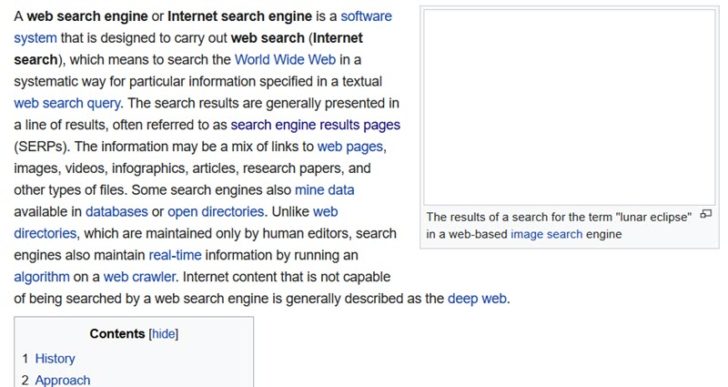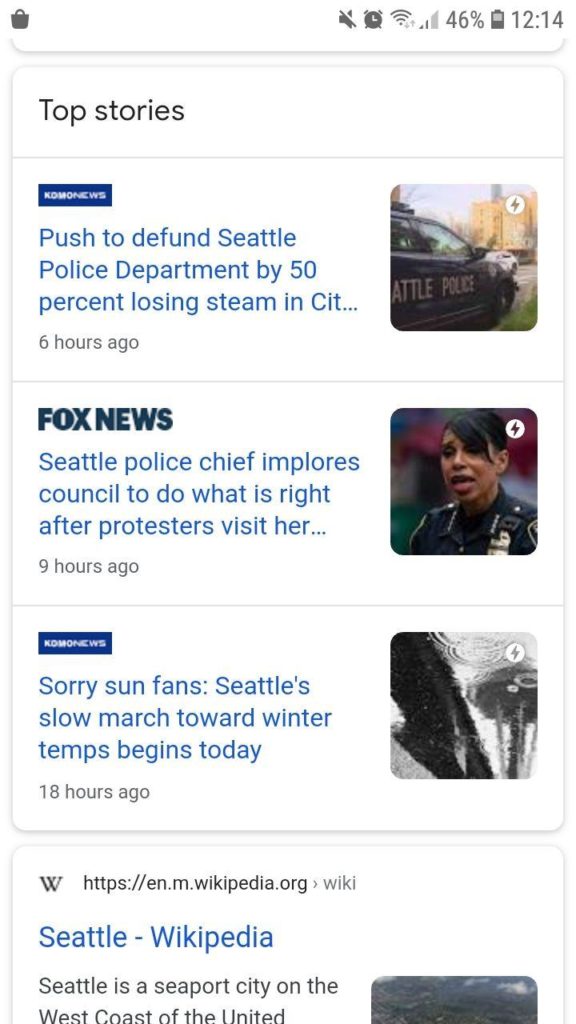30-second summary:
- The biggest Google update of the year is called the Page Experience update.
- Core Web Vitals are part of that update, and they are definitely ranking factors to keep in mind, especially when optimizing images.
- AMP is no longer the only way to get a “Top Stories” feature on mobile. Starting in 2021, any news webpage can become a “Top Story”.
- Combining AMP’s privacy concerns and cost of operation might mean that AMP will disappear within a couple of years.
- E-A-T is not a ranking factor right now, and we don’t know if it will become one in the future.
2020. What a year. History is happening around us, and Google? Well, Google keeps on revamping their search algorithms. Over the years, there have been many many major algorithm updates, as Google worked to keep us on our toes. 2020 was no different: in one fell swoop, we got the news about a Page Experience update and AMP news. All the while the debate about whether or not you need E-A-T for ranking rages on. How do the Core Web Vitals stand in changing the search game in 2021?
Let’s go over each of these innovations and see which will change the way we do SEO, and which will fade into obscurity sooner rather than later.
1. Importance of core web vitals for SEO
Core Web Vitals were part of Page Experience update, and, by far, caused the biggest ruckus.
There’s a lot to learn about Core Web Vitals, but they boil down to the three biggest issues on our webpages:
- LCP — Largest Contentful Paint, which deals with the loading speed of the largest single object on the page.
- FID — First Input Delay, which means the reaction time of the page to the first user input after (whether they click, tap, or press any keys).
- CLS — Cumulative Layout Shift — this is the measure of how much the content of the page jumps while loading content, mostly visual content, after opening.
How core web vitals influences rankings
Of course, some SEO experts think that the entire Page Experience update is nothing special, and could even: “[…] distract, […] from the core mission of communication and storytelling,”.
And, sure, most of Page experience update is simply an assembly of things we’ve known for a while: use HTTPS, be mobile-friendly, control your page speed, and so on.
But Core Web Vitals are a bit different and can influence the SEO practice in unexpected ways. Key factor that’s already changing rankings is Cumulative Layout Shift.
As most SEO experts know, for a while an important part of image optimization was using the <decoding=async> attribute in the <img> tag to avoid losing page speed while rendering the page.
Using <decoding=async> could lead to some seriously janky pages if coders didn’t specify the height and width of every single image to be rendered. Some websites did it anyway, for example, Wikipedia on most of its pages has a predefined space for images created ahead of time.

But as SEO experts we didn’t have to worry about pages being jumpy all too much, as that didn’t influence the rankings. Now with CLS being formally announced as a ranking factor, things will change for a whole slew of websites and SEO experts.
We’ll need to make sure that every webpage is coded with CLS in mind, with the needed space for every image defined ahead of time, to avoid the layout shifts.
The verdict
Overall, of course, it’s too early to tell, and more work by SEO’s around the web needs to be done here. However, it seems that if you aren’t used to focusing on technical SEO, Core Web Vitals becoming ranking signals might not influence your day-to-day work at all.
However, if you are conducting complicated technical SEO, then Core Web Vitals will definitely change the way you work in as-yet unexpected ways.
2. Importance of AMP for SEO
The AMP’s relevance today is kind of an open question. While it’s always been great as a quick-and-easy way to increase page speed, the privacy concerns have been voiced over and over again since the technology’s very inception.
But in 2020, significant changes are afoot, since, within the same Page Experience update, Google announced that there’s finally no requirement for us to create AMP pages to occupy the “Top Stories” SERP feature.
That’s a pretty huge step for anybody trying to accrue as many SERP features as they can, and, in particular, for news websites.

How AMP influences rankings
If we believe John Muellers’ words, then AMP is not a ranking factor. Seems plain and simple enough. But of course, things aren’t so simple, because AMP comes with pretty significant gains in page speed, and speed is an important ranking factor.
Thanks to AMP’s pre-rendering combined with some severe design limitations, AMP webpages often really do win in page speed, even if not in ranking as is.
The “Top Stories” SERP feature, however, was a huge benefit to using an AMP for any news agency with a website, and it’s easy to understand why. Just look at how much of the page is occupied by the “Top Stories” results.
Not only do “Top Stories” automatically get top 1 ranking on the SERP, but they also sport a logo of the website posting them, standing out even more from the boring old blue-link SERP.
This means that for a few years now news websites were essentially forced into using AMP to get into a “Top Stories” SERP feature on mobile since it absorbs a whole lot of clicks.
On the other hand, it takes quite a lot of resources to support AMP versions of the webpages, because you are basically maintaining a whole additional version of your website.
Added to which, a page that’s been properly optimized for speed might not need AMP for those speed gains, as well.
The verdict
While it’s tough to imagine that AMP will fade away completely within the next couple of years, AMP’s privacy issues combined with the cost of maintaining it might spell the end of it being a widely used practice.
Now, with the “Top Stories” becoming available to non-AMP pages, there’s virtually no reason to jeopardize the users’ security for speed gains you could get by proper optimization.
3. Importance of E-A-T for SEO
Expertise. Authority. Trust. All perfectly positive words and something we should all strive for in our professional lives. But what about search optimization?
Coming straight from Google’s Quality Rater Guidelines, E-A-T has been the talk of the town for a good moment now. Let’s dive in and see how they might change the way we optimize for search.
How E-A-T influences rankings
For most of us, they don’t really.
Sure, Quality Rater Guidelines provide valuable insights into Google’s ranking process. However, E-A-T is one of the lesser-important factors we should be focusing on, partly because these are nebulous, abstract concepts, and partly because Google doesn’t exactly want us to.
As Google’s official representatives informed us, E-A-T is not in itself a ranking factor.
Receiving follow-up questions, Google’s John Mueller then reiterated that point, and Ben Gomes, Google’s VP of search engineering confirmed that quality raters don’t influence any page’s rankings directly.
However, in practice, we often see that the so-called YMYL websites already can’t rank without having some expertise and authority established. A very popular example is that it’s virtually impossible to rank a website providing medical advice without an actual doctor writing the articles.
The problem here is that expertise, authority, and trustworthiness are not easily interpreted by the search algorithms, which only understand code.
And, at the moment, there seems to be no surefire way for Google to transform these signals into rankings, except to read the feedback of their quality raters before each algorithm update.
The verdict
While using E-A-T to rank websites might sound like an inarguable benefit for the searcher, there is a couple of concerns that aren’t easily solved, namely:
- Who exactly will be determining the E-A-T signals, and according to which standard?
- The introduction of such factors creates a system where the smaller and newer websites are punished in rankings for not having the trustworthiness that they couldn’t realistically acquire.
Responding to both of these concerns requires time and effort on the search engine’s side.
As things stand right now, E-A-T is not something to keep in mind while doing day-to-day SEO operations.
Let’s imagine a fantastical scenario where a webmaster/SEO expert has some free time. Then they might want to work on E-A-T, to try and stay ahead of the curve.
On the other hand, there simply isn’t any proof that Google will actually use E-A-T. Or that, even if used, these signals will become major ranking factors. For this reason, E-A-T shouldn’t be your priority ahead of traditional SEO tasks like link building and technical optimization.
Additionally, consider this. The entire Quality Rater Guidelines is 168 pages long. However, a comprehensive explanation of what E-A-T is and why it might be calculated a certain way will take many more pages than that.
Conclusion
As of the time of this writing, the Core Web Vitals seems to be the most important ranking news to come out in 2020 in practical terms. However, search is an extremely volatile field: what worked two weeks ago may not work today, and what works today might not work for most of us.
The matters are further complicated because we’re fighting an uneven battle: it’s simply not in search engines’ best interest to give us a full and detailed picture of how ranking works, lest we abuse it.
This is why it’s crucial to keep our hand on the pulse of optimization news and changes occurring every single day. With constant efforts from our SEO community to work out the best way to top rankings, it’s possible for us to close that gap and know for sure which trends are paramount, and which we can allow ourselves to overlook.
Aleh Barysevich is Founder and CMO at SEO PowerSuite and Awario.
The post Google ranking factors to change search in 2021: Core Web Vitals, E-A-T, or AMP? appeared first on Search Engine Watch.
from Search Engine Watch https://ift.tt/3ksAocT



No comments:
Post a Comment